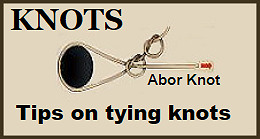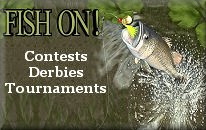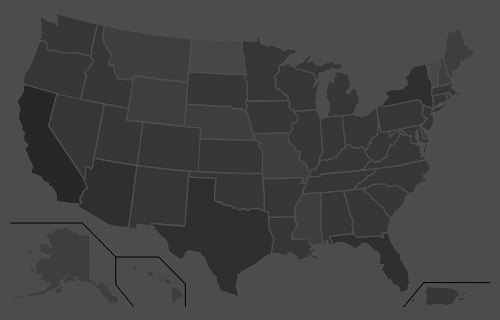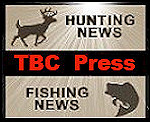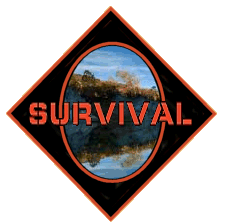“Our added winter moisture and active calling period led to a very long nesting and hatching season, starting in late April and extending into early summer, with chicks hatching as late as early July,” O’Dell said. “From a population standpoint, we are out of a deficit for the first time since 2001-2002. Quail are starting to pop up in places they haven’t been seen in a while.
“If you’ve never had the chance to experience what Arizona quail hunting built its name on, then this would be the year to get out and enjoy it.”
Meanwhile, hunters should note that the season for Mearns’ quail doesn’t begin until Dec. 4. It’s summer rainfall that plays a key role in nesting success and population numbers of this species. After a spotty and relatively weak monsoon across southern Arizona, these birds are likely to be abundant only in pockets that received sufficient precipitation this summer.
A valid Arizona hunting or combination hunt and fish license is required for all hunters 10 and older. Those hunters under 10 must either have a valid hunting or combination hunt and fish license, or be accompanied by an adult who possesses a valid hunting or combination hunt and fish license. Licenses can be purchased online or at license dealers statewide. A youth combination hunt and fish license (ages 10 to 17) is $5.
The general bag limit is 15 quail per day in the aggregate, of which no more than eight may be Mearns’ quail (when the Mearns’ season opens Dec. 4). The general possession limit is 45 quail in the aggregate after opening day, of which no more than 15 Gambel’s, scaled or California quail in the aggregate may be taken in any one day. After the opening of the Mearns’ season, the 45-quail possession limit may include 24 Mearns’ quail, of which no more than eight may be taken in any one day.
More quail-hunting information can be found on the department’s website at https://www.azgfd.com/Hunting/. Another resource for both new and experienced hunters alike is “An Introduction to Hunting Arizona’s Small Game.” Written by Randall D. Babb, the 196-page, full-color book covers where and how to hunt small game birds (like quail), squirrels, rabbits, ducks and geese. It also includes how to prepare and cook your harvest, with illustrations and recipes. The book can be ordered for $16.95 at www.azgfd.gov/publications.
Finally, hunters should check out O’Dell’s techniques for field-dressing quail at https://www.youtube.com/watch?v=3gRwZAcWzzk.
####
Publishers Notes: OUT OF STATE HUNTERS, FISHERMEN & OUTDOOR ENTHUSIASTS; Due to the Covid 19 pandemic, there could be limitations for OUT of STATE hunters, fishermen and other outdoor enthusiasts to include a 14-day quarantine requirement or negative COVID-19 testing alternative. Please check with the State's Department of Natural Resources BEFORE you travel or apply for the 2020 Fall Hunts.
SURVIVAL & SAFETY
Unfortunately, some of the world's favorite past times can also be some of its most dangerous. Everyone (hunters, fishhermen, campers, hikers) should know some basic things before heading out into the field or on the water.
The Backcountry Press
Information from fellow hunters, fishermen, campers and hikers to keep you safe when going in the field or on the water.
© 2020 TBC Press - All Rights Reserved Website Design by:
H U N T E R S A F E T Y
Hunters -- Blaze Orange Requirements
CLICK HERE -- Got orange? If not, now is a good time to obtain blaze orange for fall hunting. Humans can recognize blaze orange and will relate it to the presence of a human because it is a color not found in nature. All states require hunters to wear at least 400 square inches of blaze orange on their head, chest and back when hunting during firearm season.
GUNS
CLICK HERE -- The most important aspect of hunting concerns how to walk and carry a gun. It is important to make sure that the muzzle always points away from the hunter and any companions. There are many ways to do this. One option is the side carry, which is effectively carrying the gun with one hand and tucking the stock between the elbow and the body. It is not recommended to use the side carry when the hunter is walking through dense brush or with other companions walking in front...
ARCHERY & BOWS
Every year archery hunters injure themselves and most of the accidents are caused by archers doing one of two things: not being safe in tree stands or having arrows out of their quiver, before they're ready to shoot...
Bowhunting doesn't involve firearms, but it does present two unique risks. Every year there are reports of hunters falling from trees or jabbing themselves or other hunters while carrying arrows in their hands. Another risk is letting an arrow fly without being certain what's behind the target. Arrows, especially carbon arrows, can hit with great force at distances as far as 100 yards from the point of release. Here are some tips to keep you safe and have an enjoyable archery hunt:
ICE SAFETY
The basics of Ice fishing is finding an iced up body of water that contains fish. However if you want to be safe and good at it, experience and knowledge make a big difference...
The dangers of late-season ice touches on an issue and a question of responsibility that - if you hunt ducks with a dog - you will at some point be confronted with: when is it too dangerous for your dog to hunt?
Ice Fishing Caution and Safety Reminders -- There are few areas in late December where ice is safe enough to support fishing. “Once we have sustained cold weather to form good ice, ice fishing can be safe and a lot of fun,” said Col. David LeCours, Vermont’s Chief Game Warden, “but when we go onto the ice, we need to use good judgment and observe several safety precautions.”
Trying to determine if the ice is safe on your lake? Try using this chart as a 'guideline' in your research. These Guidelines were created by Minnesota Department of Natural Resources and are good rules of thumb for any state if your going to be on the ice.
TREE STANDS
Hunters: Take the FREE Treestand Safety Course & Why You Should - With more and more news on death and/or serious injuries regarding treestand accidents. Backcountry Press wants to stress the importance of treestand safety. Take the FREE Treestand Safety Course from HUNTERcourse.com. It is The ONLY TMA approved online treestand safety course. The FREE Course Covers....
The tree stand is one of the most popular pieces of hunting equipment. Using tree stands can be dangerous if they are used incorrectly or carelessly. Tree stand accidents are the leading cause of hunter injuries in Maryland. Nationally, including Maryland, over 50% of all hunting accidents are tree stand related. Most tree stand accidents occur in transition from a climbing device to the tree stand and from the tree stand onto the climbing device. Other injuries occur when the tree stand fails (usually home made stands) or from incorrect installation of a manufactured stand. (Watch Video)
Leaving a City in a Serious Disaster - How & Why You Should
When you live in a city, you enjoy all the benefits of having good times at a close proximity. All that said, cities are a death trap; big cities in particular. If a serious disaster strikes without warning, we often see how ugly they can get. When hurricanes hit, people have time to evacuate, but a serious disaster that affects the delivery of resources to a city can create total chaos in a matter of weeks...

